DAVID DOWNTOWN
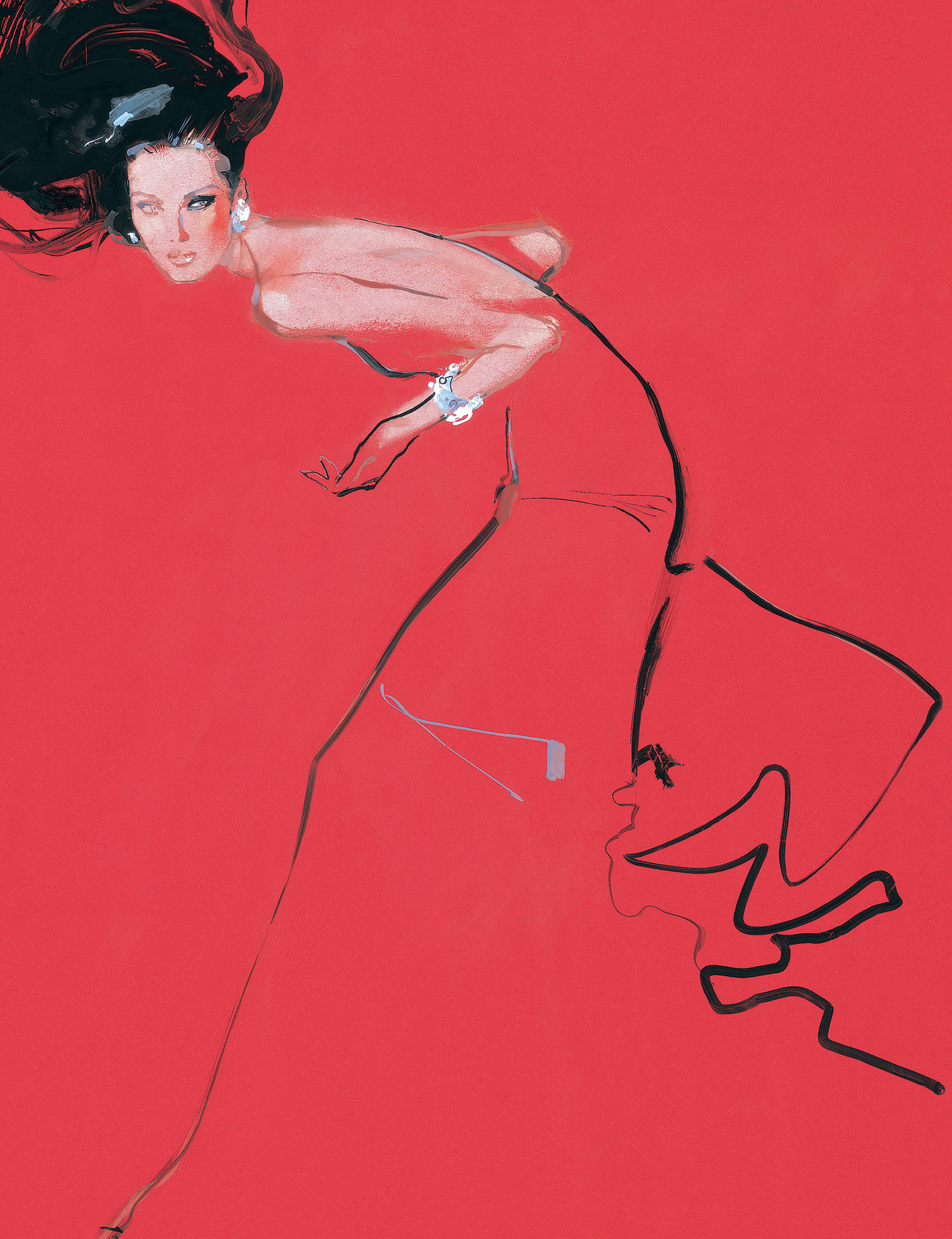 Valentino Haute Couture, 2010
Valentino Haute Couture, 2010
The fashion world has cherished fashion illustration as a high art form for centuries. We have all been in awe over the long and graceful graphite lines of flowing silk, shadows and tones of watercolor, or choppy textures of pastels or charcoal that perfectly create the mood of the garment while still looking effortless. One of the reigning kings of fashion illustration is undoubtedly David Downton, the London transplant has become a seminal figure in the realm of fashion illustration
from his early work for couture designers and now to his appointment as the first ever fashion artist in residence at Claridge’s Hotel in London. However, his work transcends fashion illustration as he does not focus on the garments, but rather the personality behind them which has enabled him to garner an impressive client list within and without fashion that includes Chanel, Dior, Tiffany & Co., the Victoria & Albert Museum, Cate Blanchett, Dita Von Teese, Catherine Deneuve, Iman, Linda Evangelista, and Paloma Picasso. After one sees Downton’s work it is easy to see how he could have collected such a star- studded following. Here he tells us first hand how he became such a large figure in fashion illustration, his thoughts on the industry, his favorite clients, and where he thinks it is going with the advent of social media and the wide access we all have to fashion images and illustration.
What drew you to fashion and to sketching garments?
I was sent to illustrate the haute couture collections twenty years ago on the whim of an art director I knew. In a sense, I never really left that first job. It was a baptism by fire. Prior to that, I hadn’t really thought about being a fashion illustrator. I suppose you could say fashion ‘happened’ to me, and I am very grateful it did.
What type of garments/designers inspire your work?
I have always loved Christian Lacroix, Valentino, Dior, Schiaparelli: designers with art and artistry in their DNA. I have been lucky in that I have worked with some of the most extraordinary talents. My main job is to observe, absorb, and record what I see. I don’t create, I react.
Was there a person in your life who inspired you to become an artist?
I had discovered my talent as an artist when I was very young and was encouraged to use it by my parents. I also realised early on that people who didn’t draw thought that what I did was magical and I suppose I just enjoyed the attention. From then on, other people always inspired and encouraged me to work on my skills and show off.
Using brush strokes to create movement, and negative space, what do you find to be most important – the woman, garment, or the mood?
I believe that you need all three working together. The Chinese say you need eye, hand, and heart to create a great drawing. I agree.
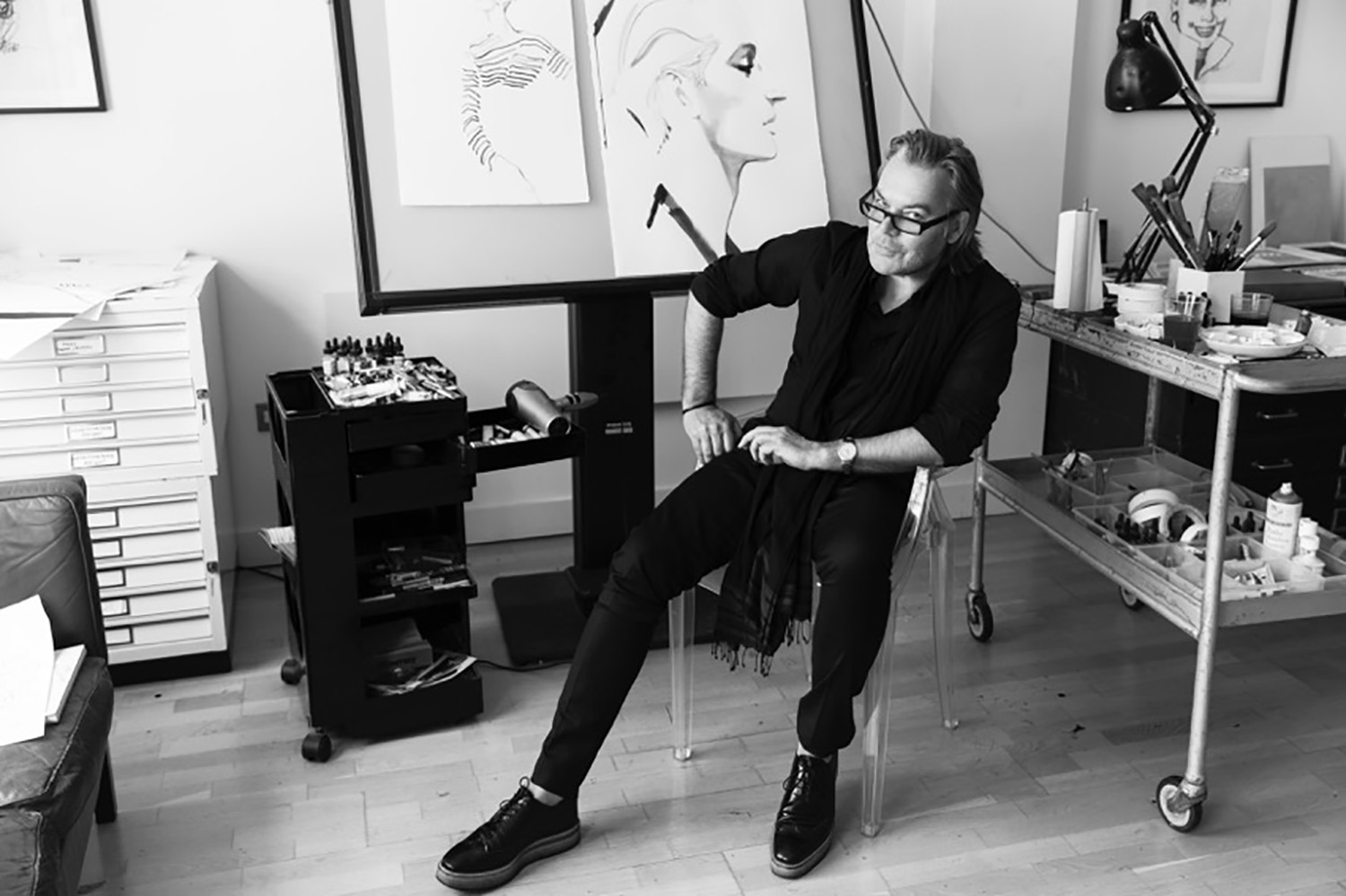
Photograph of David in his studio by Jacobus Snyman 2015.
Your illustrations are so unique to a style that is all your own. How did you develop this signature style?
It evolved gradually. I don’t really think of it as a style, more as a response to the subject. I think there is much too much focus on style, especially when you are starting out. Style isn’t something you pursue, it’s something that will find you, when you are ready.
You have said in interviews that your favorite subjects are the subjects that have great lines and body shapes could you name some favorites?
Carmen Dell’Orefice, Erin O’Connor, Dita Von Teese, Iman, Anna Piaggi, Farida Khelfa. It’s a long list and I don’t want
to be rude and leave anyone out. I am attracted to style and beauty, character and individuality. The person across the drawing board is the drawing.
Who would be one of your dream subjects? Past and present?
From the past: Garbo, Ava Gardner, Josephine Baker, Edith Sitwell
Today: Tilda Swinton, Grace Jones, Julianne Moore. Another long list and that’s without including men.
Who are some fashion illustrators that you admire and why?
From the ‘Golden Age’, Gruau, Antonio, Vertès and Tom Keogh. Today: Stina Persson, Tina Berning, Bil Donovan, Richard Haines, Carlos Aponte, among others. All of them draw brilliantly and have a personal viewpoint as well as a strong sense of design and colour. They don’t rely on gimmicks or chase ‘likes’. Of course, the opinions that really matter come from your peers.
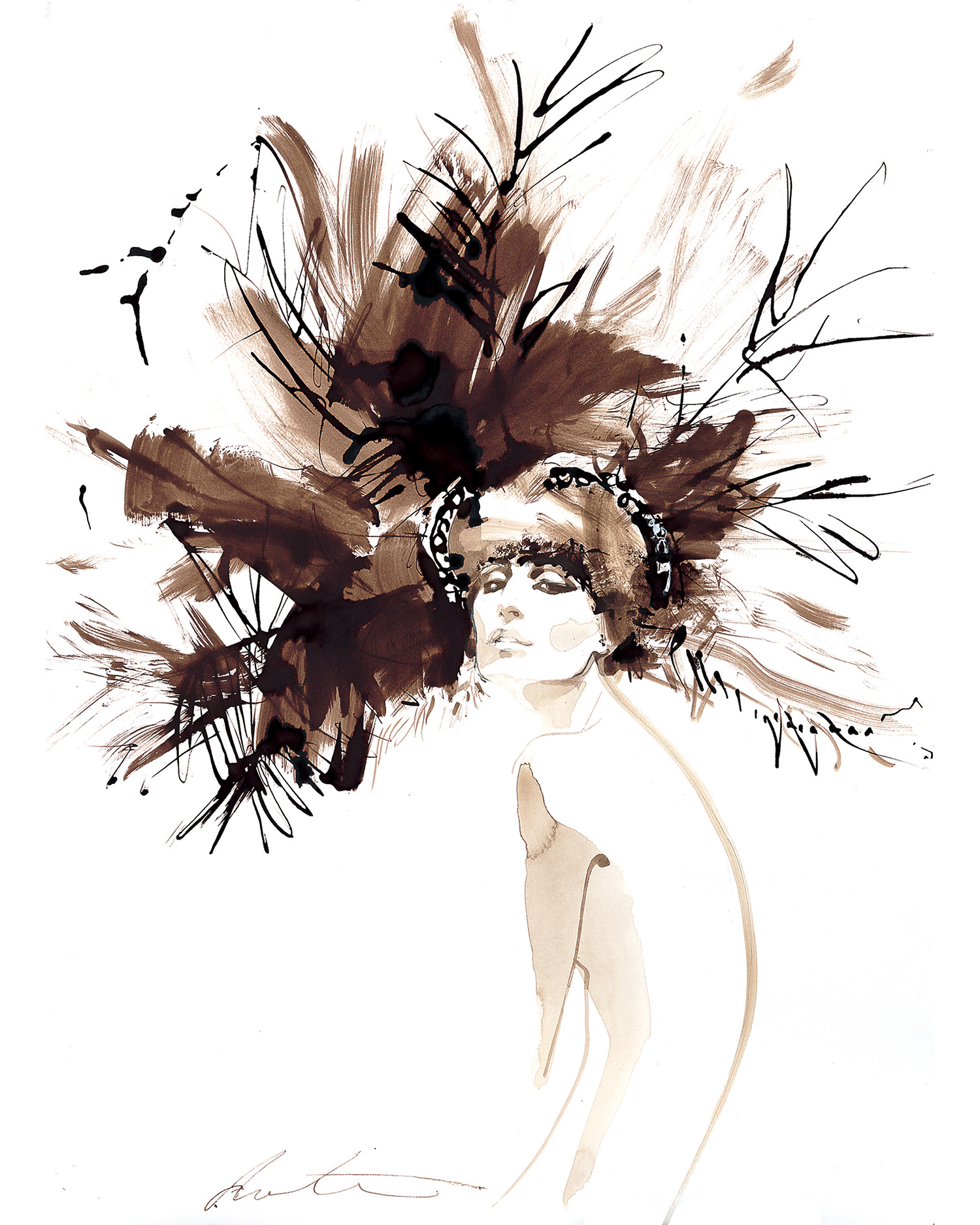
Erin O’Connor, Paris, 2002 Headdress by Stephen Jones for Dior Haute Couture.
Which are your most memorable brand collaborations?
I just worked on the poster and graphics for the opera La Traviata, in Rome. It was directed by Sofia Coppola and designed by Valentino which was a very exciting collaboration for me to be a part of. I have been drawing Valentino couture for 20 years now, and it continues to be a magical experience working with such skilled designers, artisans, and models. One of my other favorite jobs was when Chanel commissioned me to cover their Metiers d’art collection outside Edinburgh. Of course, I am always relishing my ongoing role as artist in residence at Claridge’s hotel in London, illustrating some of the most fabulous women in the world.
Who was the first person to commission a piece from you?
I did a book cover right after leaving Art College. It was a disaster.
What do you think of other artist that copy your style?
It happens to everyone who achieves any level of success. At first, I’ll admit, it was a bit of a shock. I would hate to
be the discount version of someone else (although of course I have my influences). Ultimately though, it is not my concern, there are too many other important things in the world to think about.
For you, what is the hardest part about being a fashion illustrator?
Fashion never stops. You have to keep up and stay relevant. I always feel that every year, on the first of January you set the clock to zero and start again. I like to think that it’s a positive to reinvent myself and push my abilities so my clients stay happy, and I remain proud of my work.
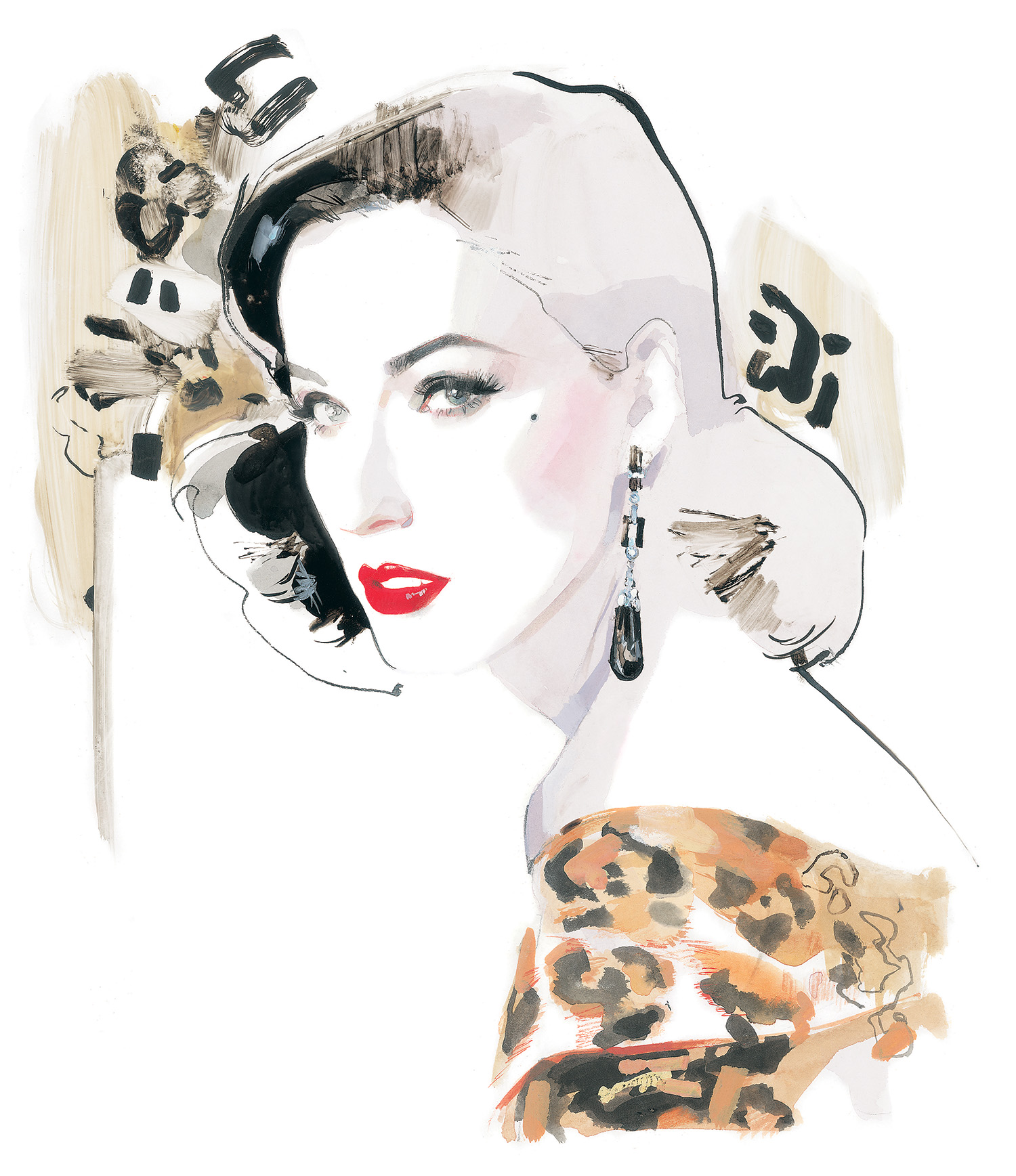
Erin O’Connor, Paris, 2002 Headdress by Stephen Jones for Dior Haute Couture
How do you know when it’s time to stop working and declare your illustration as complete?
You have to learn to listen to your ‘inner voice’. As a rule of thumb I stop a little before I want to and then revisit the drawing after a cooling down period. For me the worst drawings are the ones where I didn’t catch the moment and stop in time. It’s a very precise skill.
Where do you go to escape and relax? Where are your favorite destination spots?
To really relax, I go to Ithaca, my favourite Greek Island. If it’s a mixture of work, relaxation and fun, L.A or Paris always inspire me. I love Venice in the winter, Rome anytime. I live in the countryside but am basically an urban dweller, so I usually head for cities.
Throughout your illustrious career, what has been the most rewarding part?
The most rewarding part is undoubtedly the people you meet and work with along the way.
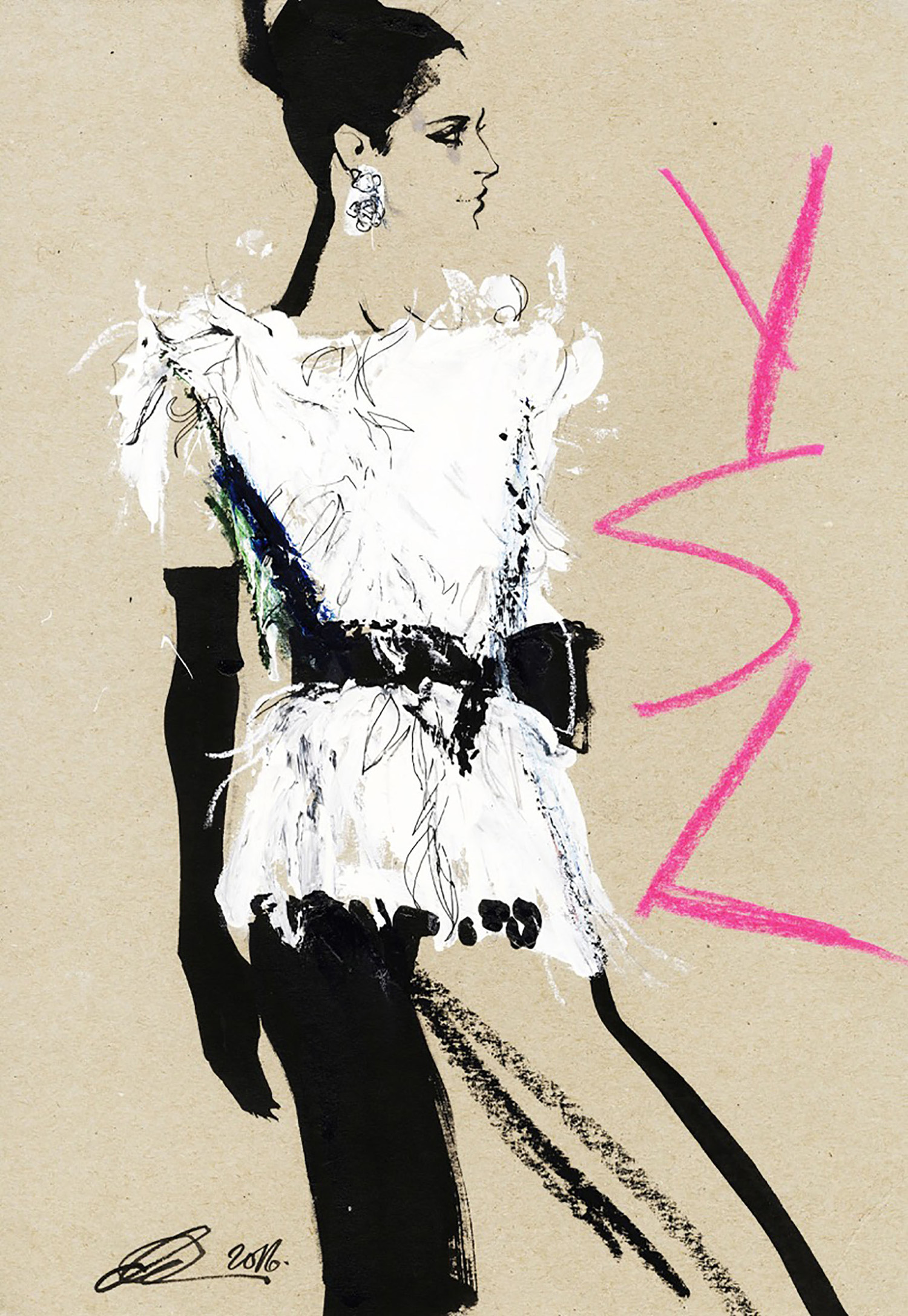 YSL 2016
YSL 2016
Fashion illustration has had a very long and beautiful place in fashion history, what do you think the future holds for the profession?
I think it’s exciting that so many people want to take it up. Fashion illustration never ‘went away’ but now it is seen as a viable career and that is attracting a wide range of talent. That can only be good!
How do you think the fashion industry has changed over time?
The biggest thing is the digital revolution and the need for fast fashion. Also couture has whittled down to half of what it used to be and that took a toll on many facets of the industry.
If you were not working in fashion illustration, what do you think you would be doing?
I don’t have any other skills, so I’ve never really thought about it. That said, I am starting to write here and there and I
am really enjoying it. I haven’t written anything properly since school, so I am starting all over again.
Interview by Marc Sifuentes
